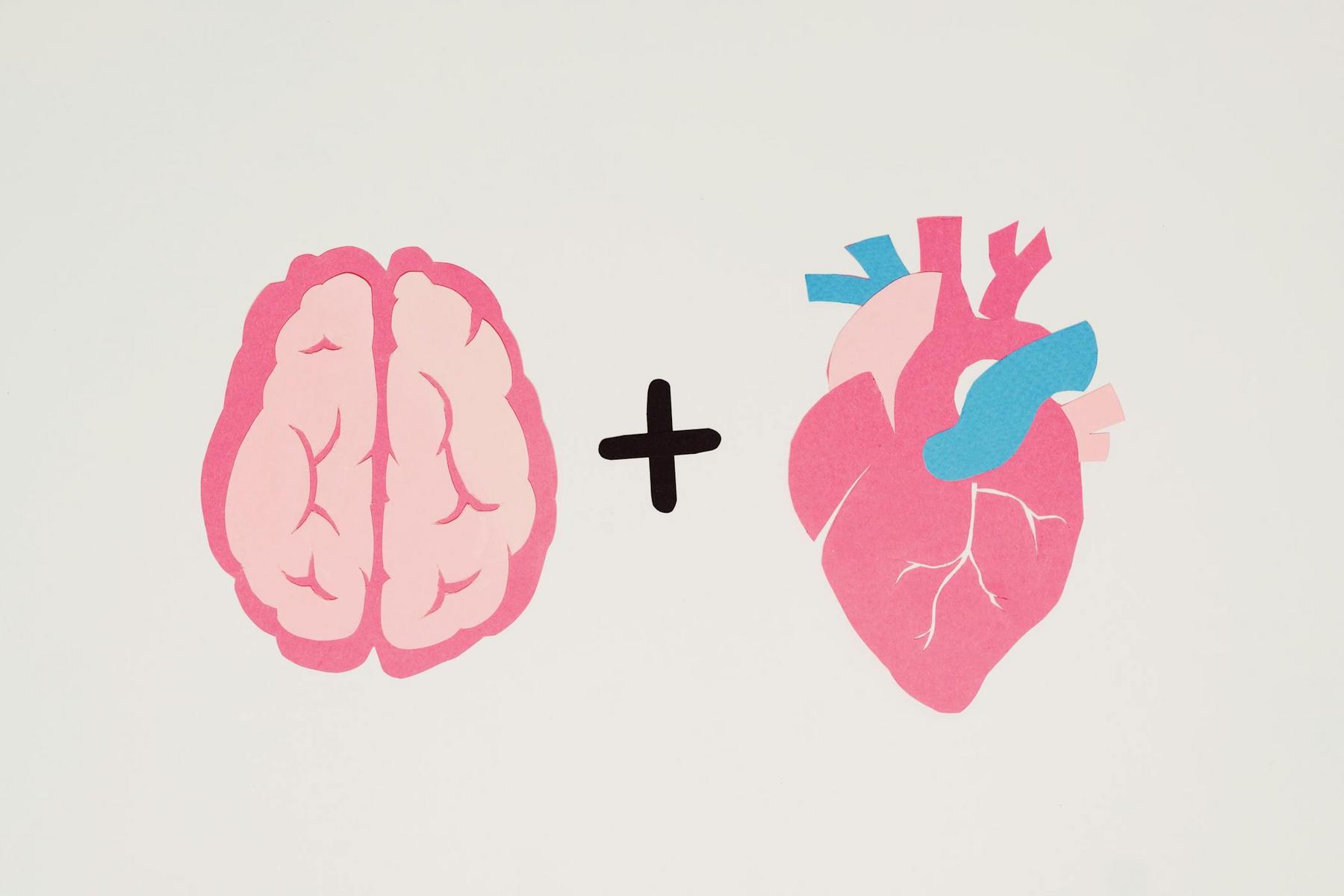In an era where stress-related conditions affect millions of Australians annually, creating substantial burdens on both individual wellbeing and healthcare systems, the search for evidence-based interventions that address root causes rather than merely managing symptoms has become increasingly urgent. Traditional approaches to stress management often focus on external circumstances or quick fixes that provide temporary relief without developing sustainable coping mechanisms or addressing the fundamental patterns of reactivity that perpetuate suffering. Against this backdrop, Mindfulness-Based Stress Reduction emerges as a revolutionary intervention that bridges ancient contemplative wisdom with rigorous scientific methodology, offering a comprehensive framework for transforming how individuals relate to stress, difficulty, and the inevitable challenges of human existence.
The significance of understanding MBSR’s origins and principles extends far beyond academic curiosity, as this intervention has fundamentally altered the landscape of integrative healthcare and established new paradigms for addressing stress-related conditions across diverse populations. Since its inception in 1979, MBSR has been implemented in over 720 medical centres worldwide, with more than 25,000 individuals completing the program and contributing to an extensive research base that continues to validate its effectiveness. The program’s systematic integration of contemplative practices with evidence-based healthcare represents one of the most successful examples of bridging traditional wisdom with contemporary scientific standards, creating a model that has inspired numerous related interventions while maintaining its distinctive emphasis on direct experience and present-moment awareness.
What Are the Historical Origins of Mindfulness-Based Stress Reduction?
The emergence of Mindfulness-Based Stress Reduction in the late 1970s occurred within a unique convergence of cultural, scientific, and healthcare circumstances that created fertile ground for integrating contemplative practices with mainstream medical treatment. The program’s genesis can be traced to 1979 when Jon Kabat-Zinn established what was initially called the Stress Reduction and Relaxation Program at the University of Massachusetts Medical School, responding to the needs of patients who had not found adequate relief through conventional medical approaches to chronic conditions.
This pioneering initiative represented a radical departure from traditional medical paradigms that typically addressed stress and chronic illness through standard medical treatments or brief counselling sessions. The historical context of the 1960s and 1970s had witnessed increasing Western interest in Eastern spiritual practices, particularly following the countercultural movement’s exploration of meditation and mindfulness traditions from Asia. However, Kabat-Zinn’s innovation lay not in simply transplanting these practices into medical settings, but in carefully extracting their therapeutic essence while removing religious and cultural elements that might limit accessibility to diverse patient populations.
The transformation from the original Stress Reduction and Relaxation Program to the more specifically named Mindfulness-Based Stress Reduction reflected the evolution toward a more focused and scientifically grounded approach. Early research conducted during the 1980s and 1990s provided compelling evidence for the program’s effectiveness with chronically ill patients who had exhausted conventional treatment options, establishing credibility within the medical community and setting the foundation for widespread adoption.
The historical significance of MBSR extends beyond its clinical applications to represent a broader shift in Western medicine’s understanding of the mind-body connection and the role of patient participation in healing processes. Prior to MBSR’s development, stress management in medical settings rarely addressed the deeper patterns of reactivity and suffering that characterise chronic stress conditions, instead focusing primarily on symptom suppression or brief interventions that provided temporary relief without developing sustainable coping skills.
Who Was Jon Kabat-Zinn and How Did He Develop MBSR Principles?
Jon Kabat-Zinn’s unique background as both a rigorous scientist and dedicated contemplative practitioner positioned him ideally to create a bridge between Eastern mindfulness traditions and Western medical science. Born in New York City in 1944, Kabat-Zinn grew up in an intellectually stimulating environment as the son of Elvin Kabat, a prominent biomedical scientist, and Sally Kabat, an accomplished painter. This early exposure to both scientific methodology and artistic creativity influenced his ability to approach mindfulness with analytical rigour and intuitive understanding.
His academic trajectory led him to earn a Ph.D. in molecular biology from the Massachusetts Institute of Technology in 1971, where he studied under Salvador Luria, a Nobel Laureate in medicine, establishing credentials in the most demanding levels of scientific research. During his time at MIT, Kabat-Zinn became deeply involved in anti-war activism, experiences that led him to question his life’s purpose and search for what he termed his “karmic assignment.”
The pivotal moment in Kabat-Zinn’s journey toward creating MBSR occurred through his introduction to meditation by Philip Kapleau, a Zen teacher who spoke at MIT. This encounter opened him to the transformative potential of contemplative practices, leading him to study with several renowned Buddhist teachers including Seung Sahn, Thich Nhat Hanh, and teachers at the Insight Meditation Society such as Jack Kornfield and Joseph Goldstein.
His practice encompassed multiple traditions, including Soto Zen, Vipassana meditation, Hatha yoga, and Advaita Vedanta, providing comprehensive understanding of different approaches to mindfulness and meditation. This diverse contemplative education allowed Kabat-Zinn to appreciate common elements across traditions while understanding how different practices might be adapted for various therapeutic purposes.
Kabat-Zinn’s genius lay in his ability to extract essential therapeutic elements from traditional practices while presenting them in a thoroughly secular and scientific framework. His medical background provided deep understanding of patient needs and healthcare system requirements, while his contemplative training gave him direct experience of mindfulness practices and their transformative potential. This dual expertise enabled him to create MBSR as a program that maintained the integrity and effectiveness of traditional mindfulness practices while meeting the standards of evidence-based medicine.
What Are the Core Philosophical Principles of Mindfulness-Based Stress Reduction?
The philosophical underpinnings of Mindfulness-Based Stress Reduction represent a carefully crafted synthesis of ancient wisdom traditions and contemporary scientific understanding, creating a framework that maintains therapeutic effectiveness while remaining accessible to diverse populations. At its core, MBSR is founded on the principle of mindfulness, which Kabat-Zinn defines as “moment-to-moment, non-judgmental awareness.”
This definition captures the essential elements that distinguish mindfulness from other forms of attention or relaxation: the emphasis on present-moment experience, the cultivation of observational awareness without immediately evaluating what is observed, and the recognition that this capacity for awareness can be systematically developed through practice. The philosophical foundation recognises that human suffering is often intensified not by circumstances themselves, but by habitual reactions to those circumstances, including resistance, avoidance, or excessive identification with thoughts and emotions.
| MBSR Principles | Traditional Stress Management | Key Distinctions |
|---|---|---|
| Non-judgmental awareness | Problem-solving focus | Process vs. content orientation |
| Present-moment attention | Future planning/past analysis | Temporal focus differences |
| Acceptance of experience | Symptom elimination | Relationship to difficulty |
| Systematic mind training | Quick relief techniques | Skill development approach |
| Group learning community | Individual counselling | Social support integration |
| Secular presentation | Therapeutic or religious context | Accessibility considerations |
| Eight-week commitment | Brief interventions | Sustained practice emphasis |
The seven foundational attitudes of mindfulness that structure MBSR practice translate traditional contemplative principles into accessible contemporary language. Non-judging involves developing the capacity to observe experience without immediately categorising it as desirable or undesirable, a skill essential for working skilfully with difficult emotions or chronic challenges. Patience recognises that healing and growth unfold according to their own timeline rather than preferences, cultivating tolerance for uncertainty and gradual change.
Beginner’s mind involves approaching each moment with fresh awareness rather than through the filter of preconceptions and past experiences, allowing for new possibilities and creative responses to familiar challenges. Trust encompasses both confidence in the process of mindfulness practice and recognition of one’s own inherent wisdom and capacity for healing, moving beyond dependence on external authorities toward internal sources of guidance.
Non-striving paradoxically suggests that effort to achieve specific outcomes can interfere with the natural unfolding of awareness and healing, encouraging participants to engage fully in practice while holding goals lightly. Acceptance involves acknowledging present circumstances without immediately trying to change them, creating the foundation for skilful response rather than reactive patterns. Finally, letting go recognises the tendency to grasp onto pleasant experiences or push away difficult ones, cultivating instead a more spacious relationship with the constantly changing nature of experience.
The secular presentation of these principles represents one of MBSR’s most significant innovations, making contemplative practices accessible to healthcare settings and diverse populations who might be uncomfortable with explicitly religious frameworks. This secularisation process required careful attention to maintaining essential therapeutic elements while removing cultural and religious elements that might create barriers to participation.
How Is the MBSR Program Structured and What Methods Does It Use?
The eight-week structure of Mindfulness-Based Stress Reduction reflects decades of refinement in optimising the balance between sufficient practice time to develop genuine mindfulness skills and practical constraints that make the program accessible within healthcare and community settings. Each weekly session typically lasts 2.5 hours, providing adequate time for instruction, guided practice, group discussion, and integration of learning.
The program includes an orientation session to establish expectations and group dynamics, eight progressive weekly meetings that systematically build mindfulness skills, and a day-long silent retreat usually held between the sixth and seventh sessions that allows for deeper immersion in practice. This structure recognises that developing mindfulness requires consistent engagement over time rather than brief exposure, while acknowledging practical limitations that prevent most people from undertaking traditional intensive meditation retreats.
The core formal practices that constitute MBSR’s methodology have been selected and refined based on both traditional effectiveness and empirical research demonstrating their therapeutic benefits. The body scan practice, typically introduced in the first session, involves systematically bringing attention to different parts of the body from toes to head whilst lying down, cultivating detailed awareness of physical sensations without trying to change them.
This practice serves multiple functions: developing the capacity for sustained attention, revealing the distinction between thinking about sensations and directly experiencing them, and often uncovering unconscious patterns of physical tension or emotional holding. The practice typically lasts 45 minutes and forms the foundation for developing the kind of detailed, non-judgmental awareness that characterises mindfulness.
Sitting meditation practices in MBSR begin with attention to breath and gradually expand to include awareness of body sensations, sounds, thoughts, and emotions without trying to suppress or change any of these experiences. Unlike concentration practices that aim to maintain single-pointed focus, MBSR meditation cultivates choiceless awareness that can accommodate whatever arises in experience whilst maintaining equanimity and presence.
Mindful movement practices in MBSR include gentle yoga postures and walking meditation, both designed to extend mindfulness from formal sitting practices into embodied experience and daily activities. The yoga component involves simple stretches and postures performed with careful attention to bodily sensations, breathing, and the mind’s reactions to physical challenge or limitation.
The group discussion component of MBSR sessions provides essential opportunities for participants to share their experiences, learn from others facing similar challenges, and integrate practice insights with daily life circumstances. These discussions are facilitated to maintain focus on direct experience rather than theoretical debate, helping participants develop capacity to articulate their inner experience whilst learning from diverse perspectives of group members.
What Does Scientific Research Reveal About MBSR’s Effectiveness?
The empirical foundation supporting Mindfulness-Based Stress Reduction represents one of the most robust research bases in the field of mind-body interventions, with over four decades of systematic investigation demonstrating consistent benefits across diverse populations and clinical conditions. Early research conducted at the University of Massachusetts Medical School in the 1980s and 1990s established MBSR’s credibility by documenting significant improvements in chronic pain, anxiety, depression, and overall quality of life among participants who had not responded adequately to conventional approaches.
These foundational studies employed rigorous scientific methodology including control groups, standardised outcome measures, and extended follow-up periods, setting the standard for subsequent research in mindfulness-based interventions. The accumulation of evidence has been particularly compelling because improvements have been documented not only in self-reported measures of wellbeing but also in objective physiological markers including immune function, blood pressure, cortisol levels, and brain structure as measured through neuroimaging.
Contemporary systematic reviews and meta-analyses have synthesised this extensive research base, providing comprehensive assessments of MBSR effectiveness across different populations and clinical conditions. A major systematic review examining 101 randomised controlled trials with over 8,000 participants found that MBSR produced significant improvements in mental health compared to inactive control conditions, with effect sizes indicating meaningful clinical benefits.
The analysis revealed that MBSR was effective across diverse populations including individuals with chronic medical conditions, mental health challenges, and healthy community members seeking stress reduction. Importantly, the research demonstrated that benefits were maintained at follow-up assessments ranging from one month to three years post-intervention, suggesting that MBSR provides lasting rather than temporary improvements.
The neurobiological research underlying Mindfulness-Based Stress Reduction has revolutionised scientific understanding of how contemplative practices create lasting changes in brain structure and function, providing compelling mechanistic explanations for the clinical benefits observed in behavioural studies. Advanced neuroimaging techniques have revealed that MBSR practice produces measurable changes in multiple brain regions associated with attention, emotional regulation, self-awareness, and stress responsivity.
One of the most consistently documented neurobiological effects involves increased cortical thickness in brain regions associated with attention and sensory processing, particularly in the prefrontal cortex and anterior cingulate cortex. The prefrontal cortex shows increased thickness and enhanced functional connectivity following MBSR training, with structural changes correlating with improved performance on attention and cognitive flexibility tasks.
Perhaps most significantly, MBSR training consistently produces reductions in amygdala size, reactivity, and connectivity with other brain regions involved in threat detection and stress activation. These changes correspond with participants’ reports of reduced anxiety, improved stress tolerance, and greater emotional stability, providing direct neurobiological evidence for MBSR’s effectiveness in stress reduction.
How Has Mindfulness-Based Stress Reduction Evolved in Contemporary Healthcare?
The integration of Mindfulness-Based Stress Reduction into healthcare settings represents one of the most successful examples of evidence-based complementary approaches becoming standard components of comprehensive medical care. Currently, over 720 medical centres and clinics worldwide offer MBSR programs, reflecting widespread recognition of the intervention’s clinical value across diverse healthcare contexts.
This adoption has occurred through systematic implementation processes that address practical considerations including staff training, program scheduling, space requirements, and integration with existing clinical services. Major healthcare systems including the Cleveland Clinic, Mayo Clinic, and University of Massachusetts Medical School have developed comprehensive MBSR programs that serve both patients and healthcare staff, demonstrating institutional commitment to mindfulness-based approaches.
The clinical applications of MBSR span virtually every medical specialty, with particularly strong evidence for effectiveness in conditions where stress, pain, and emotional distress are significant factors. In oncology settings, MBSR has demonstrated effectiveness in reducing anxiety, depression, and fatigue whilst improving quality of life and immune function among cancer patients undergoing treatment.
Cardiovascular medicine has found MBSR valuable for patients with heart disease, hypertension, and related conditions, with research showing improvements in blood pressure, heart rate variability, and other cardiovascular risk factors following MBSR training. Pain medicine specialists have integrated MBSR into comprehensive chronic pain management programs, with studies demonstrating significant reductions in pain severity and pain-related disability among participants with various chronic pain conditions.
The contemporary challenges facing MBSR implementation include maintaining program quality amid rapid expansion, addressing equity and accessibility concerns, and continuing to build the evidence base for cost-effectiveness and long-term outcomes. Quality assurance becomes increasingly complex as programs proliferate globally, requiring robust training standards, ongoing supervision systems, and outcome monitoring protocols that ensure effectiveness whilst preventing dilution of essential program elements.
The worldwide dissemination of Mindfulness-Based Stress Reduction over the past four decades represents one of the most significant examples of successful integration between contemplative wisdom traditions and evidence-based healthcare on a global scale. From its origins at a single medical centre in Massachusetts, MBSR has expanded to every continent, with programs operating in diverse cultural contexts whilst maintaining core elements that research has identified as essential for program effectiveness.
Understanding MBSR’s Lasting Impact on Modern Healthcare
Mindfulness-Based Stress Reduction stands as a remarkable achievement in the integration of contemplative wisdom and scientific medicine, demonstrating that ancient practices for cultivating awareness can be successfully adapted for contemporary healthcare settings whilst maintaining both therapeutic effectiveness and scientific credibility. The program’s development by Jon Kabat-Zinn represents a masterful synthesis of Buddhist mindfulness traditions with rigorous empirical methodology, creating an intervention that has transformed approaches to stress management and healthcare professional wellbeing across the globe.
The extensive research foundation supporting MBSR, encompassing hundreds of randomised controlled trials and multiple systematic reviews, provides compelling evidence for its effectiveness across diverse populations and clinical conditions whilst revealing the neurobiological mechanisms underlying its therapeutic benefits. The philosophical principles underlying MBSR offer a fundamentally different approach to human suffering and healing, emphasising the cultivation of present-moment awareness and non-judgmental acceptance rather than symptom suppression or problem avoidance.
The program’s secular presentation has made these transformative practices accessible to diverse populations within healthcare settings, demonstrating that contemplative approaches can complement rather than compete with conventional approaches. As healthcare systems worldwide grapple with rising rates of stress-related illness and healthcare provider burnout, MBSR offers a proven, cost-effective intervention that addresses root causes rather than merely managing symptoms.
The continued global expansion and refinement of MBSR programs represents not only a convergence of ancient wisdom and modern science but also a dynamic evolution in the way we understand and manage human health.













